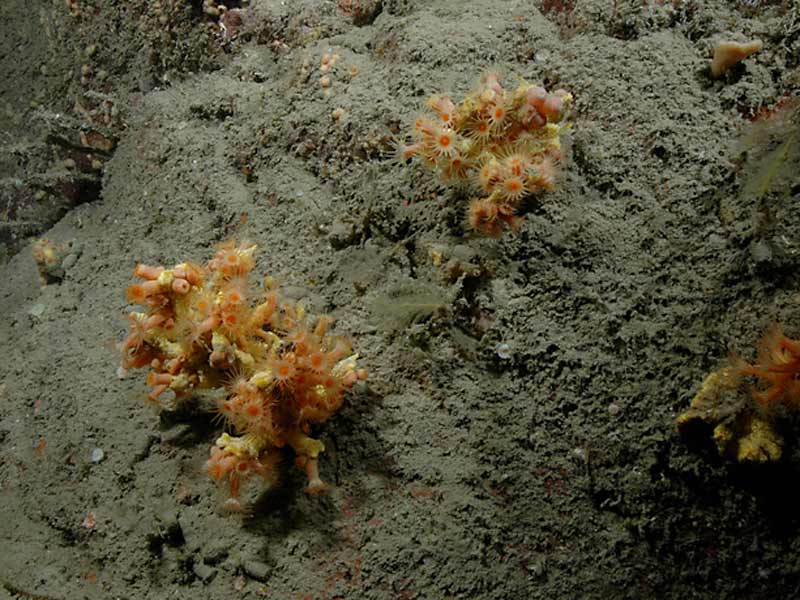Yellow cluster anemone (Parazoanthus axinellae)
Distribution data supplied by the Ocean Biodiversity Information System (OBIS). To interrogate UK data visit the NBN Atlas.Map Help
| Researched by | Olwen Ager | Refereed by | Admin |
| Authority | (Schmidt, 1862) | ||
| Other common names | - | Synonyms | Parazoanthus dixoni |
Summary
Description
Recorded distribution in Britain and Ireland
Parazoanthus axinellae has been recorded on the south west and west coasts of the British Isles.Global distribution
Parazoanthus axinellae has been recorded around southwest Europe to the Mediterranean.Habitat
Parazoanthus axinellae is usually found attached to organic substrata including sponges, shells and worm tubes. It is also found on rocks. Parazoanthus axinellae is found from the shallow sublittoral offshore to about 100 m.Depth range
6-100mIdentifying features
- Colonial anemone.
- Yellow polyps 1.5 cm tall, 0.5 cm in diameter.
- 26-34 bright yellow tentacles, usually 30-32.
- Column often encrusted with sand grains or sponge spicules.
Additional information
Parazoanthus anguicomus is a similar northern species. It is whitish, slightly larger, with 34-44 tentacles and is found in deeper water (Hayward & Ryland 1995).Listed by
Bibliography
Hayward, P., Nelson-Smith, T. & Shields, C. 1996. Collins pocket guide. Sea shore of Britain and northern Europe. London: HarperCollins.
Hayward, P.J. & Ryland, J.S. (ed.) 1995b. Handbook of the marine fauna of North-West Europe. Oxford: Oxford University Press.
Howson, C.M. & Picton, B.E., 1997. The species directory of the marine fauna and flora of the British Isles and surrounding seas. Belfast: Ulster Museum. [Ulster Museum publication, no. 276.]
Manuel, R.L., 1988. British Anthozoa. Synopses of the British Fauna (New Series) (ed. D.M. Kermack & R.S.K. Barnes). The Linnean Society of London [Synopses of the British Fauna No. 18.]. DOI https://doi.org/10.1002/iroh.19810660505
Moore, J., 2002. An atlas of marine Biodiversity Action Plan species and habitats and Species of Conservation Concern in Wales, 2nd edn. Report to the Countryside Council for Wales, CCW Contract Science Report no. 509.
Picton, B.E. & Costello, M.J., 1998. BioMar biotope viewer: a guide to marine habitats, fauna and flora of Britain and Ireland. [CD-ROM] Environmental Sciences Unit, Trinity College, Dublin.
Datasets
Centre for Environmental Data and Recording, 2018. Ulster Museum Marine Surveys of Northern Ireland Coastal Waters. Occurrence dataset https://www.nmni.com/CEDaR/CEDaR-Centre-for-Environmental-Data-and-Recording.aspx accessed via NBNAtlas.org on 2018-09-25.
NBN (National Biodiversity Network) Atlas. Available from: https://www.nbnatlas.org.
OBIS (Ocean Biodiversity Information System), 2025. Global map of species distribution using gridded data. Available from: Ocean Biogeographic Information System. www.iobis.org. Accessed: 2025-08-08
Citation
This review can be cited as:
Last Updated: 20/02/2007







